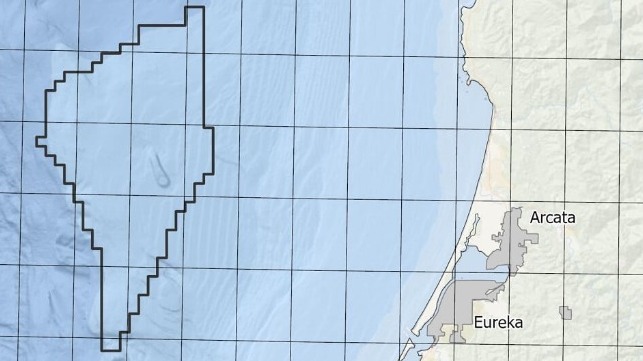BOEM Approves Environmental Assessment for Humboldt Wind Area

The U.S. Bureau of Ocean Energy Management (BOEM) has finished its environmental review for future offshore wind farm development in the Humboldt Wind Energy Area, a 130,000-acre parcel located 20 miles off northern California. It has issued a finding of no significant impact, allowing the process towards a lease sale to move foward.
“The completion of this environmental assessment represents an important step forward for ensuring that any future renewable energy development - should a lease sale occur - is done in a responsible manner,” said BOEM Director Amanda Lefton. “Working closely with Tribes, state and federal partners and key stakeholders, BOEM remains focused on ensuring that such development is done in a way that avoids or reduces potential impacts to the environment and other ocean users in the region.”
If developed, the Humbold offshore wind area could generate up to 1.6 gigawatts of green energy for California's grid, enough for about 560,000 homes. It would be among the first full-size commercial offshore wind lease areas on the West Coast, and would contribute about five percent of the Biden administration's target of 30 GW of U.S. offshore wind capacity by 2030. Due to water depth, it would have to rely on new floating offshore wind technology, with moored floating platforms supporting each turbine.
The environmental assessment is a preliminary step taken before site evaluation activities like surveys, core samples and met buoy placements. In addition to environmental impacts of these activities, it looks at the effects of project easements from each potential lease and any needed right-of-way grants for subsea cable corridors.
The next step in the process would be to move to a lease auction, followed by filing of a construction and operations plan (COP) by the successful bidder(s). In the COP review stage, the impact of each project is considered pursuant to the National Environmental Policy Act (NEPA), a process better known as an environmental impact statement (EIS) review. The public-engagement portion of the process is usually most pronounced during this later stage, when there is a specific project to discuss (and specific disputes are aired).
Northern California's fishing community has expressed concern about the development of large-scale floating offshore wind farms off Humboldt Bay. Local fishermens' advocates note that floating platforms are new and little-tested, and the effects on fish behavior and fishery health are not yet fully known. Noise from installation, vibration from turbines, and electromagnetic emissions from underwater cables could have effects on fishery health, some fishing groups warn - even outside of the wind lease area itself. In the past, BOEM has held discussions with coastal states about potentially compensating fishermen for possible economic harm from wind farm development in historical fishing areas.
